LAB REPORT
Science and Technology Making Headlines
Feb. 5, 2016
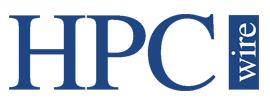
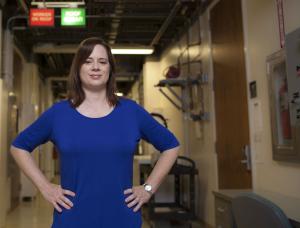
Lawrence Livermore scientist Dawn Shaughnessy is one of four LLNL researchers teaming up with area science teachers for the 2016 "Science on Saturday" lecture series.
Take a walk down the periodic table
Lawrence Livermore’s popular lecture series “Science on Saturday” returns this Saturday, Feb. 6, with the theme “Women in science, technology, engineering and mathematics (STEM).”
Kicking off the series is: “Behold Livermorium: A Quest for New Elements,” by LLNL scientist Dawn Shaughnessy and teacher Katherine Huang of Dougherty Valley High School. The talk will focus on the science aspect of STEM. Shaughnessy and Huang will discuss how scientists create new elements and how their nuclear and chemical properties compare to their naturally occurring counterparts. They also will discuss the journey from element discovery to element naming, using as an example the official naming of element 116 as Livermorium, in honor of the scientists and research that has been done at LLNL.
The lectures are free and will be held in the Bankhead Theater, located at 2400 First St. in Livermore. Two presentations are offered at 9:30 and 11:15 a.m. on a first-come, first-served basis. No pre-registration is required.

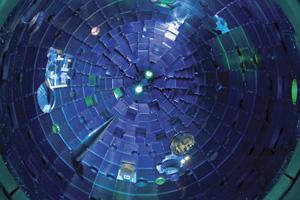
Cryogenics operator John Cagle mounts a target on the National Ignition Facility (NIF) target positioner for an experiment. An area backlighter disc is seen on-edge on the right of the assembly. The front of the target is covered with a gold shield with a diagnostic slit.
Shedding light on a turbulent mix
Scientists from Los Alamos National Laboratory (LANL) are leading an experimental campaign on the National Ignition Facility designed to further understand turbulent mix models used in both high energy density (HED) and inertial confinement fusion (ICF) experiments. NIF is the only facility with the energy and shot-to-shot reproducibility needed for the experiments.
During shots using what's known as the "shock/shear" platform, NIF fires 300 kilojoules of laser energy at each end of a target comprised of two half-hohlraums to produce shock waves from opposite ends of a foam-filled shock tube. These waves turn the foam into plasma and allow the shocks to travel and create a counter-propagating shear mixing effect across a metal foil.
The target has evolved over time — different experiments have used titanium, copper, aluminum and roughened aluminum, and more materials are to come — but they all have one thing in common: each experiment enhances understanding of turbulent mix models in the HED regime. These models, developed and calibrated by LANL using hydrodynamic test data from the 1980s through the present, are now being examined through the lens of the shock/shear HED experiments to see how the data matches up to more extreme conditions.
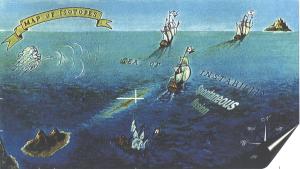
The "island of stability" refers to a predicted region of superheavy elements on the chart of nuclides with half-lives that are longer by several orders of magnitude than the half-lives of other superheavy elements.
Where will it end?
Even with new elements recently confirmed, scientists are struggling to predict the future of the chemical roadmap called the periodic table of elements.
Chemistry teachers recently had to update their classroom décor, with the announcement that scientists have confirmed the discovery of four new elements on the periodic table. The as-yet unnamed elements 113, 115, 117 and 118 (Lawrence Livermore was part of the team discovering elements 115, 117 and 118) filled in the remaining gaps at the bottom of the famous chart — a roadmap of matter’s building blocks that has successfully guided chemists for nearly a century and a half.
These superheavy elements are highly unstable and tough to create. But scientists had strong reason to believe they existed, in part because the periodic table has been remarkably consistent so far. Efforts to conjure up elements 119 and 120, which would start a new row, are already under way.

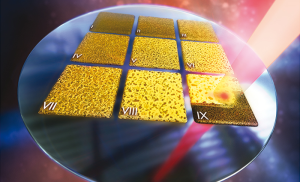
A tunable laser creates a miniature library of nanoporous gold. Image by Ryan Chen/LLNL
Striking gold on a chip
All that is gold might be glittering nano-architecture.
Laboratory researchers have created a library of nanoporous gold structures on a single chip that has direct applications for high-capacity lithium ion batteries as well as neural interfaces.
Nanoporous gold (np-Au), a porous metal used in energy and biomedical research, is produced through an alloy corrosion process known as dealloying that generates a characteristic 3-D nanoscale network of pores and ligaments.
The team describes a method for creating a library of varying np-Au morphologies on a single chip via precise delivery of tunable laser energy. Laser microprocessing provides spatial and temporal control while imposing energy near the surface of the material.

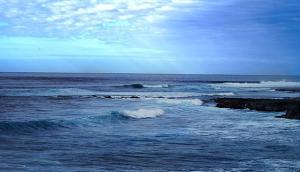
Lawrence Livermore scientists have found the deep ocean in the Southern Hemisphere has absorbed more than half the heat in the past two decades than was absorbed during the entire industrial era.
The heat is on
The world’s oceans are warming at a quickening rate, with the past 20 years accounting for half of the increase in ocean heat content that has occurred since pre-industrial times, a new study has found.
Lawrence Livermore scientists discovered that much of the extra heat in the ocean is buried deep under water, with 35 percent of the additional warmth found at depths below 700 meters. This means far more heat is present in the far reaches of the ocean than 20 years ago, when it contained just 20 percent of the extra heat produced from the release of greenhouse gases since the Industrial Revolution.
Ocean water, which has a much higher heat capacity than air, has absorbed more than 90 percent of the excess heat and nearly 30 percent of the carbon dioxide generated by human consumption of fossil fuels. The vast Southern Ocean sucked up 1.2 billion tons of carbon in 2011 alone – which is roughly equivalent to the European Union’s annual carbon output.





